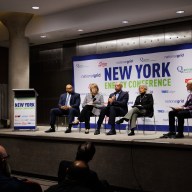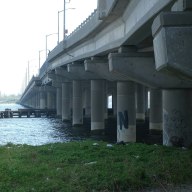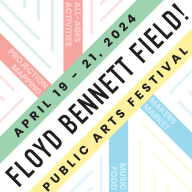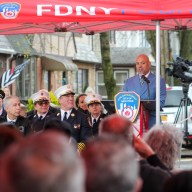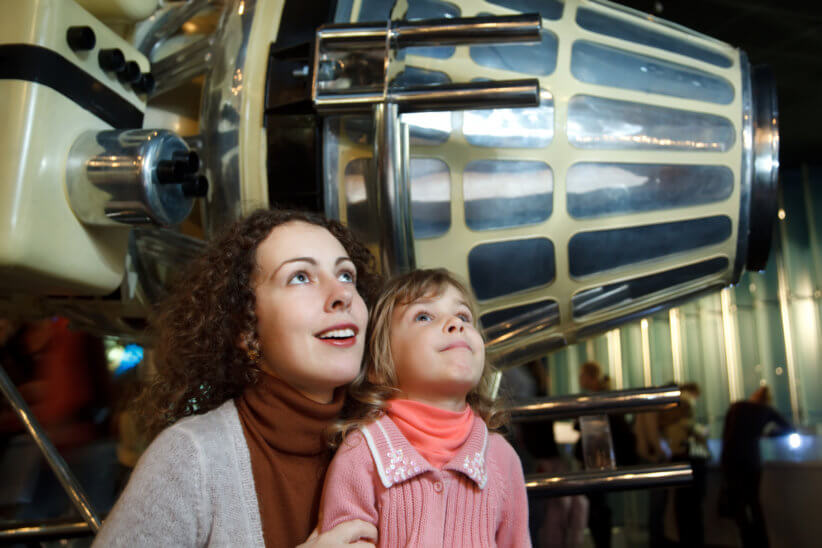By Dustin Brown
Plants nourished by runoff water from the Queensboro Bridge. Multimedia billboards wallpapering the sides of the elevated subway. A cafe nestled in the center of the Queens Boulevard Bridge for students trekking to LaGuardia Community College.
Such are the ideas that emerged last Thursday when the design team charged with reinventing Queens Plaza unveiled the product of their first four months of brainstorming.
In November the city Department of City Planning selected Philadelphia-based Margie Ruddick Landscape to redesign the streetscape of Queens Plaza from the East River all the way to Van Dam Street, an assignment she began to undertake in January with the assistance of Michael Sorkin Studios in Tribeca and a team of consultants.
Ruddick and Sorkin presented their preliminary ideas last Thursday to a small group of Long Island City business leaders assembled in a wood-paneled conference room at the Board of Elections office, where the rumble of the No. 7 train – clearly visible through the fifth-floor window – provided a constant reminder of the plaza's greatest resource and biggest headache.
As a transportation hub where seven subway lines converge only a short hop from Manhattan, Queens Plaza lies at the heart of what the city has pegged as its next central business district. But the rumble of the exposed subway and the imposing frame of the elevated structure it rides upon pose the most daunting obstacle to turning the area into an inviting environment.
Indeed, what to do with the subway structure emerged as a central issue in the designers' plans, which they also presented later that evening to neighborhood residents at PS 1.
Even something as basic as painting the elevated subway structure a bold color or installing lights that highlight certain features of the bridge could have a profound effect on the way people see the plaza, the designers said.
“You could paint the upper part of the structure and really make it an icon, make it something beautiful,” said Jason Bregman, an associate with Margie Ruddick Landscape, as he pointed out a picture depicting the elevated subway coated in orange. “The lighting and painting of the structure can really change the experience of entering Long Island City.”
Some in the audience proposed more extreme solutions to the el problem. “How about taking down the elevated structure altogether?” asked George Stamatiades of Quinn Funeral Home in Astoria, only half in jest.
But others advocated for a less destructive approach.
“Our elevated structures are not going to go away,” said Stuart Suna, the CEO of Silvercup Studios in Long Island City. “We can't hide them. We need to celebrate them.”
A redesign of the plaza roadways that simplifies the configuration and eases traffic flow was approved by the city Department of Transportation last June, and that plan serves as the canvas on which the design changes would be imprinted.
The roadway reconfiguration is expected to cost about $12 million and is still awaiting funding.
The design improvements currently being developed would be carried out after the road construction is complete on a timeline largely dictated by the repainting of the Queensboro Bridge, which means many years may go by before the ideas turn to reality.
The shift of the roadway would transform the John F. Kennedy Commuter Triangle from parking lot to park, and the designers are contemplating how to develop that triangular wedge of land on the northeast side of the plaza.
Ruddick drew a comparison with the triangles in the middle of the roadway created as Broadway cuts across the avenues at a skew, which she described as “places of civic celebration.”
“That's what this could be – a place where life coalesces and things happen,” she said.
Sorkin's vision of the plaza would make it something akin to London's Piccadilly Circus, where illuminated signs and advertisements create a marketing spectacle not unlike Times Square.
Sorkin imagines “a strong graphic element, something legibly graphic to give it a commercial pulse,” he said.
A more practical system of directional signs would also play a prominent role in showing people the way around Long Island City, because “sometimes the big tangle of elevated structure doesn't let you know where you want to go,” Ruddick said.
Another potential gathering place would be a cafe on the Queens Boulevard Bridge rising over the Sunnyside Yards, where students heading to LaGuardia could stop for a quick cup of Joe.
But perhaps the most inventive redirection of resources are the so-called “blue threads,” which would channel runoff water from the bridge and elevated subway structures to support plant growth throughout the plaza.
“We wanted to be able to capitalize on the water that's on the site … to make it greener and lusher,” said Ruddick, describing the resulting environment as an “industrial greenspace.”
Reach reporter Dustin Brown by e-mail at Timesledger@aol.com or call 718-229-0300, Ext. 154.








